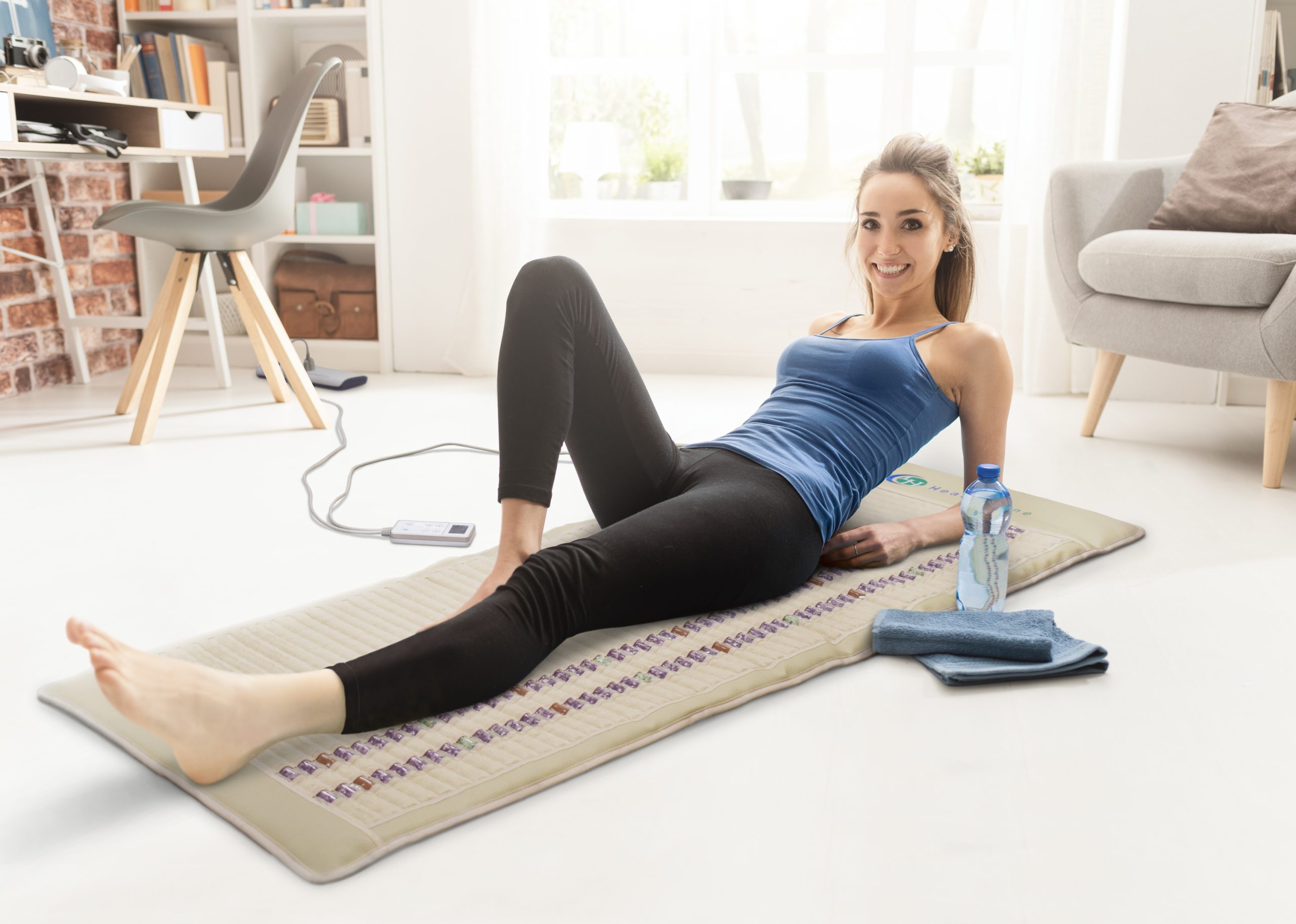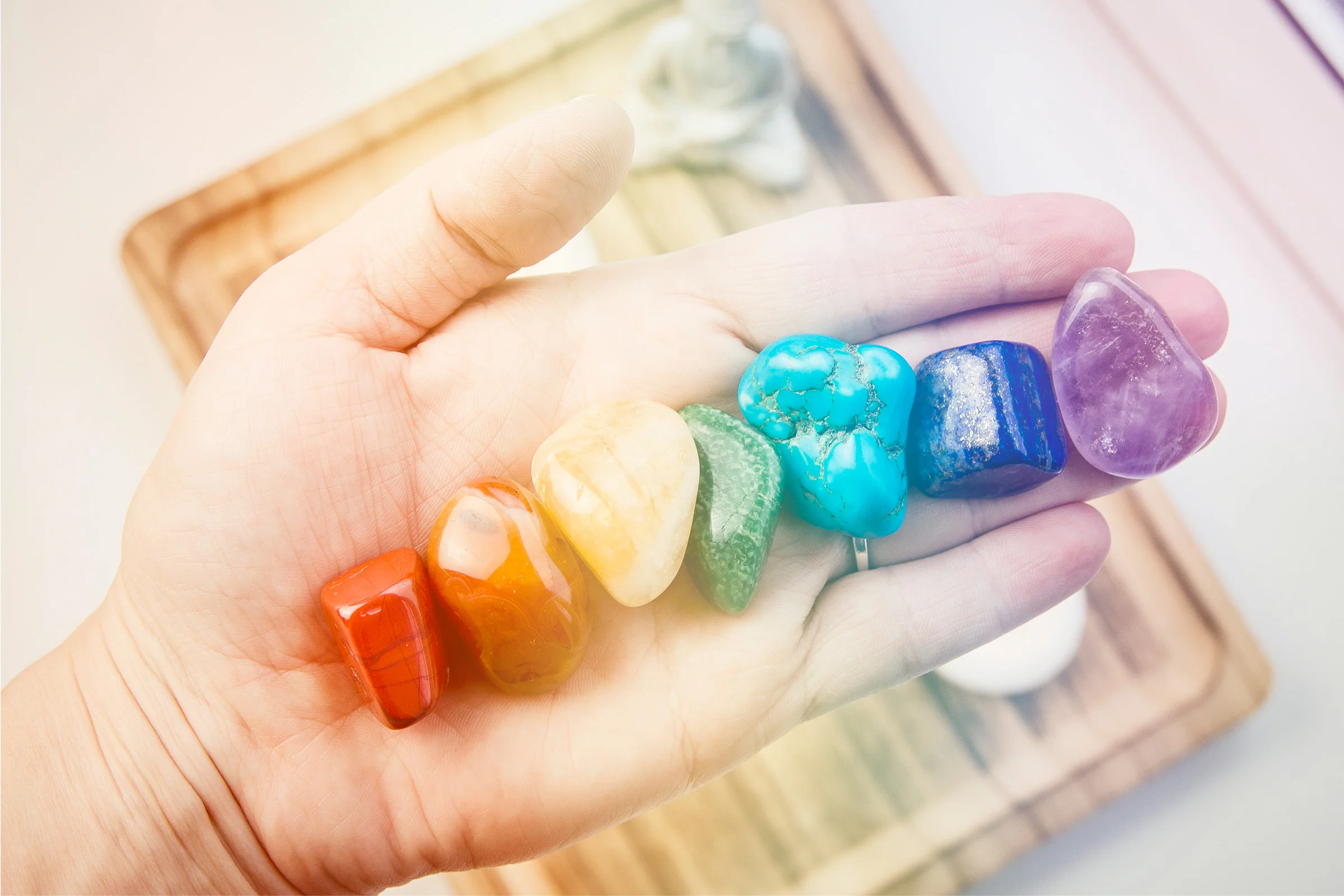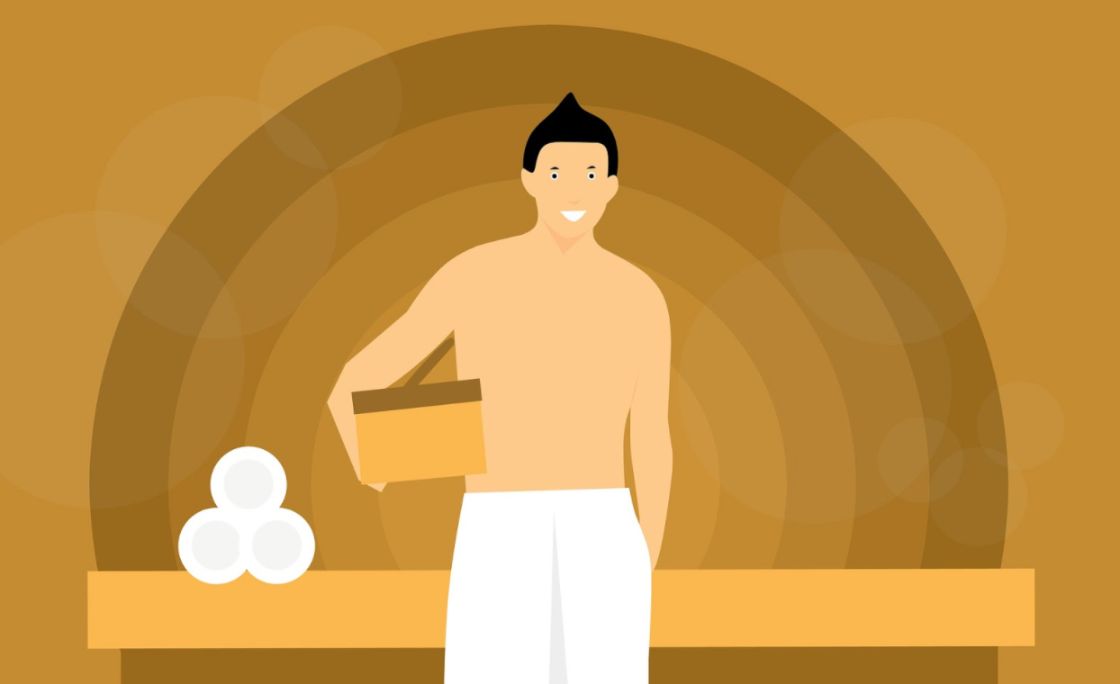Age spots, which are also called liver spots or sun spots, are actually caused by accumulated sun damage, not by aging.
These brown spots tend to occur on those who have fair skin and spend time in tanning beds or go outside without skin protection.
Although liver spots pose no serious health risks, they are not aesthetically pleasing.
Medical treatments like chemical peels, cryosurgery, dermabrasion, and laser therapy can make sun spots look less noticeable; however, these treatments can be costly, and they come with the risk of negative side effects.
These 20 home remedies for age spots are affordable, safer alternatives to expensive medical treatments.
Almond Oil
Almond oil is an effective home remedy for sun spots because it contains minerals, niacin, phytosterols, vitamin B2, vitamin B6, vitamin E, and unsaturated fatty acids.
These vitamins and nutrients protect the skin from harmful ultraviolet light, and even out the user’s complexion.
To use almond oil for minimizing liver spots, warm the oil via a double boiler or another indirect heating method.
After allowing the oil’s temperature to rise for a few minutes, you should massage the oil into your skin for at least five minutes every night before bedtime.
It usually takes two weeks or longer of use to notice the results.
To boost the almond oil’s spot removal ability, you can add two or three drops of lemon juice to the warm oil before massaging the mixture into your skin.
Aloe Vera
Aloe vera is touted for its wide variety of uses. This inexpensive and easy-to-find plant can treat a multitude of skin conditions such as eczema, poison oak, and sunburn, due to its anti-inflammatory and moisturizing properties.
Some people also use Aloe vera to minimize the appearance of brown spots on the face and other areas of the body.
Gel obtained directly from the Aloe vera plant produces the best results; however, Aloe vera juice also works.
To remove the gel, simply snap off one leaf from the plant. Then, rub the gel directly on the sun spot.
You do not need to wipe off the gel. Apply the gel two times per day until the dark spot begins to lighten.
Apple Cider Vinegar
The alpha hydroxy acids in apple cider vinegar work to exfoliate the skin, lightening brown spots over time.
Apply a small amount of apple cider vinegar on the affected areas, and let it absorb overnight. It is common for people to notice some redness or feel a slight sting.
To combat these side effects, you can combine a few drops of olive oil or water with the apple cider vinegar.
You can use this treatment up to twice per day. In three or four weeks, the sun spots’ appearance should diminish.
Buttermilk
Lactic acid is an organic compound that reduces dark spots on the skin. This compound naturally occurs in dairy products such as buttermilk.
To rejuvenate the skin, pour some buttermilk into a container, and dip a clean, dry cotton ball into the buttermilk.
Next, squeeze the cotton ball until no excess buttermilk remains. Finally, gently rub the cotton ball on your sun spots.
After 15 minutes, you should rinse off the buttermilk with water.
Repeat this process once each day until you see results. You may also use buttermilk as a daily face wash, or while in the bathtub.
Also, you may add several drops of lime juice to the bowl of buttermilk, to limit the frequency and severity of acne outbreaks.
Castor Oil
Castor oil is a long-used remedy for an array of skin conditions, including liver spots.
People who have the normal or oily skin only need to pour a tiny amount of castor oil on the liver spots they wish to treat, massaging the oil until it completely absorbs.
However, those who have dry skin should add some coconut oil or olive oil to the castor oil in order to prevent additional dryness.
After four weeks of applying castor oil in the morning and at night, you should see an improvement in your skin.
Chickpeas
Garbanzo beans, or chickpeas, are not only high in fiber and protein but also full of folate and vitamin B. These nutrients energize skin cells and repair sun damage.
To tackle brown spots on the skin, you will need some water, one-fourth cup of tahini and one cup of chickpeas.
First, cook the chickpeas. Then, put the tahini and cooked chickpeas into a food processor, gradually adding water until the mixture’s texture thickens.
You can use this recipe for spot treatment or an entire face mask.
After applying the mixture to your skin, let the mixture sit until it dries. After 30 minutes, you can remove the mask with a thorough water rinse.
Dandelions
To many people, dandelions are a garden weed that must be eradicated. However, dandelions are high in antioxidants, vitamin B6, and other beneficial nutrients.
Dandelions restore the skin by eliminating dead skin cells, and they do not cost any money if you have them in your yard.
After pulling a handful of dandelions from the ground, break all of the dandelions’ stems, which will give you access to their sap.
Apply the sap to your dark spots two times every day, allowing the sap to remain on the skin for a couple of minutes before you rinse it off.
After several weeks of use, you will not only notice that your liver spots are lighter, but also that your complexion is clearer.
Horseradish
Melanin, or pigment, is a complex polymer that gives the skin its color. When the body overproduces melanin, dark spots on the face and the body can appear.
Horseradish contains vitamin C, which hinders melanin production.
Plus, the glucosinolates in horseradish act as circulation facilitators, and waste-flushing antioxidants.
To glean the skin-lightening benefits from this vegetable, you can create a paste from grated horseradish and water.
Gently rub this paste on your brown spots, keeping the paste on the skin for 15 minutes to 20 minutes before rinsing it off.
Use this treatment once every other day to lighten sun spots.
As an alternative to horseradish paste, you can make a horseradish stringent by mixing one-fourth cup of apple cider vinegar and some grated horseradish.
Put the ingredients in a sealed container, and let the mixture sit undisturbed for two weeks.
After the two weeks passes, pour the mixture through a strainer into a new container.
You can then use a cotton ball to apply the stringent to your liver spots three times per day for one month or longer.
Lemons
Lemons are useful for managing a variety of health issues, including areas of darkened skin. The citric acid in lemons is strong enough to remove dead skin cells and produce a mild bleaching effect.
All you need to do is to cut a lemon into slices; rub one of the slices directly on your brown spots.
After 15 minutes, splash some water on the treated areas. You should use this remedy two times per day until you see improvement in your sun spots.
If you have sensitive skin, the lemon juice may cause redness and irritation. To decrease the likelihood of experiencing these side effects, try diluting the lemon juice with some rosewater.
In addition, refrain from going outside soon after applying the lemon juice to your skin, because exposure to sunlight after treatment can increase the risk of skin darkening.
Onions
While the smell of onions may not make these vegetables your first choice for treating dark spots on your face, their antiseptic and exfoliating qualities mean that onions are worth a try.
Simply cut the onion with a sharp knife, and rub one slice of the onion on your sun spots.
Leave the onion juice on your skin for at least 10 minutes before you wash it off. Repeat these instructions two to three times each day.
To enhance the benefit of the onion juice, you can mix 2 tablespoons of honey with 1 tablespoon of onion juice.
Papaya
The enzymes and alpha hydroxy acids in papaya exfoliate the skin and reduce the appearance of liver spots.
Since this fruit is a known allergen for some people, you should conduct a patch test if you do not know whether you are allergic to papaya.
To do a patch test, rub a piece of cut papaya on a minute amount of skin.
If you see no signs of an allergic reaction after 24 hours, you may use some papaya to treat a larger area of skin.
After cutting a green papaya into thin slices, press the juicy part of the fruit against the darkened skin for approximately 20 minutes.
You may also dice the papaya, and press the pieces with a fork until they become pulp. Then, rub the pulp on your sun spots.
After 20 minutes, rinse off the pulp. Either method can be used one time every day.
Parsley
Since parsley has a high percentage of vitamin C, parsley can boost collagen production and clear blemishes.
Parsley also contains vitamin K, which repairs skin elasticity, and the vitamin A in this herb protects the skin from free radicals.
To lighten the dark spots on the skin, you can make a moisturizing face mask with parsley, lemon juice, and raw honey.
Start by chopping one medium-sized head of parsley. Then, crush the parsley into a paste by using a mortar and pestle.
Next, add 1 teaspoon of lemon juice and 2 teaspoons of raw honey to the paste, and mix the ingredients until they are well-blended.
Before you use the mask, make sure your face is clean and dry. Cover your face with the mask while carefully avoiding the eyes.
In 15 minutes, you can remove the mask with water. Use this mask one or two times weekly to achieve optimal results.
Potatoes
The acidic property of potato juice has a bleaching effect when regularly applied to the skin.
To make this skin-lightening concoction, grate a peeled potato, and put the shreds in a juicer or linen cloth to extract the juice.
Next, combine the potato juice with several drops of honey and lemon juice. Gently apply this mixture to your liver spots.
Thoroughly rinse your skin after 20 minutes.
Red Currants
A topical application of red currants sends the berry’s antioxidants deep into the skin to help repair damage from dangerous free radicals and ultraviolet rays, eventually reducing brown spots.
You can make a powerful liver-spot treatment at home with unripe red currants, honey, lemon juice, and rosewater.
First, crush one-fourth cup of red currants to make a paste. Then, mix in 1 tablespoon of honey along with a splash of lemon juice and rosewater.
Put the paste on any dark spots you want to lighten. Then, wash the areas with warm water after 30 minutes.
To increase the effects of this mixture, rinse the treated spots with a combination of rosewater and lemon juice.
Rosehip Seed Oil
Rosehip seed oil is a widely-known liver spot fighter. This wild rose extract has an abundance of vitamin A that rejuvenates skin and vitamin C that limits pigmentation production.
An additional benefit is rosehip seed oil’s ability to smooth and moisturize the skin.
There are two main ways to apply rosehip seed oil. The first method only requires you to pour a couple of drops on your hands, and massage the oil into your skin.
The second method involves mixing the oil with jojoba oil, almond oil, or another carrier oil to dilute the rosehip oil before massaging the mixture into your face; this method is recommended for people who have sensitive skin.
The rosehip treatment can be applied twice each day, and it takes about two months to see results.
Sandalwood Essential Oil
Sandalwood is an essential oil that also has anti-aging benefits, and it can make a noticeable difference in brown spots on the face and body.
Because sandalwood essential oil is potent, you should dilute it with any carrier oil of your choice, such as sweet almond oil.
Massage the oil combination into any dark spots. You can also combine a small amount of sandalwood powder with several drops of glycerin, rosewater, and lemon juice to make a thick paste.
Rub the paste into your sun spots. In 20 minutes, the paste will be dry.
Then, you can rinse off the paste with cool water.
Tomatoes
For years, people have used tomatoes to lighten liver spots due to the tomato’s enzymes, bleaching properties, and lycopene, which is a robust antioxidant.
You can either put tomato juice on your sun spots, or you can rub a tomato slice on dark areas. Allow the juice to sit on the skin for 20 minutes before rinsing it away.
To get more antioxidants delivered to the affected areas, you can mix the tomato juice with some organic honey.
Any of these treatments may be applied one or two times per day.
Turmeric
This spice is excellent at improving the skin’s overall health. The active ingredient in turmeric is curcumin, which contains antioxidants.
To begin, measure out 1 tablespoon of turmeric, and add the turmeric to 1 tablespoon of milk until the milk thickens.
Then, add a few drops of lemon juice to the thickened milk. Once you are sure the ingredients are thoroughly mixed, place the mixture on any dark spots you intend to treat.
To get the full benefit from the turmeric, leave the mixture on the affected areas for 15 minutes. You may clean off the mixture with lukewarm water and a mild cleanser.
During the process, be sure to handle the turmeric with care, because this spice can stain certain fabrics.
Watermelon Rinds
Surprisingly, watermelon rinds are an excellent remedy for treating brown spots on the body.
The rind of a watermelon contains an abundance of fiber, moisture, vitamin A, vitamin B, and vitamin C.
Take a watermelon rind, and cut it into a piece that is small enough to easily hold. Place the rind’s inner side to the sun spots on your skin, and use light pressure to rub it on the dark areas.
Continue to rub the rind on your skin for several minutes. After 15 minutes, wash off the juice.
Repeat these directions three times every week until you get the desired results.
Yogurt
Like buttermilk, yogurt has skin-bleaching abilities due to its lactic acid. With regular application, yogurt can lighten liver spots several shades, making the spots less noticeable.
To properly use this home remedy, you will need some yogurt, ground oatmeal, lime juice, cold water, and a small bowl.
Ideally, the lime juice should be freshly squeezed.
First, put 1 tablespoon of the yogurt, 2 tablespoons of the ground oatmeal, and 1 teaspoon of the lime juice into the small bowl, and mix the ingredients to create a paste.
Next, smear the yogurt paste on your sun spots; the yogurt needs to sit for 30 minutes.
Finally, rinse off your skin with the cold water. Apply this yogurt paste once every day for one week.
Then, use it twice per week for three months.









One comment
Great ideas! I just recently read that cryotherapy can help with dark spots. Should we then add ice to this list?